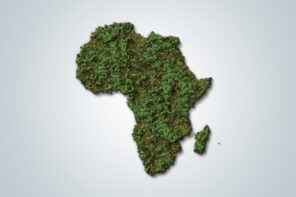
Monday November 4, 2024
Understanding the African Media Landscape
The Evolution of African Media
The African media landscape has a rich history that dates back to when colonial powers primarily controlled the press. This legacy of foreign influence continued post-independence, with state-owned broadcasters dominating the scene. However, liberalising the media sector in the 1990s marked a turning point, leading to the proliferation of privately owned media outlets.
The advent of democracy in many African nations further catalysed the growth of independent media. Countries like South Africa, Nigeria, and Kenya became regional media powerhouses with vibrant press environments and influential broadcasters. Radio, in particular, has been a powerful medium due to its affordability and accessibility, even in remote areas. According to UNESCO, radio reaches up to 80% of the African population.
Television followed, becoming a significant medium in urban areas. However, the high TV production and broadcasting costs limited its reach in rural regions. Despite these challenges, television has continued to grow, with increasing local content production and the emergence of numerous TV stations across the continent.
The Rise of Digital Media
The advent of the internet has revolutionised the media landscape globally, and Africa is no exception. Internet penetration in Africa has surged over the past decade, with Statista reporting that as of 2023, about 43% of the population of Sub-Saharan Africa has access to the Internet. Mobile technology has been a key driver of this growth, with mobile phones being many Africans’ primary means of internet access.
Countries like Nigeria and Kenya have seen a surge in online news platforms, blogs, and social media influencers who shape public discourse. Platforms like X, Facebook, and Instagram have become critical spaces for PR campaigns, enabling real-time audience engagement.
These platforms have democratised information dissemination and given rise to citizen journalism, where individuals report news and events directly. For PR professionals, this shift means engaging with digital influencers and monitoring social media trends, which are now essential to any media strategy.
Legacy Media vs. Digital Media
Despite the rise of digital media, legacy media—comprising newspapers, radio, and television—still holds significant sway in Africa. Each medium has its unique strengths and audience demographics:
- Newspapers: Though print circulation has declined globally, newspapers in Africa remain vital, particularly among older and more educated demographics. Publications like The Daily Nation in Kenya and Mail & Guardian in South Africa remain influential.
- Radio: As the most accessible medium, radio continues to dominate, especially in rural areas. Community radio stations are particularly effective in local language broadcasting, addressing community-specific issues.
- Television: TV maintains a strong presence, especially in urban centres, with channels like South Africa’s SABC and Nigeria’s NTA commanding large audiences. Local content, including dramas, news, and reality shows, attracts large audiences. Channels like Africa Magic and e.tv are popular across multiple countries.
Legacy media’s credibility and established networks make it a trusted news source, especially in regions with low internet penetration. For PR professionals, legacy media offers the advantage of reaching diverse and widespread audiences, particularly those who may not have access to digital platforms.
Digital media, on the other hand, offers immediacy and interactivity, catering to a younger, tech-savvy audience. Online news portals like Africanews and The South African have gained prominence, providing real-time updates and leveraging multimedia content.
Interestingly, the boundaries between digital and legacy media are becoming increasingly blurred. Traditional media outlets are expanding their presence online, launching digital versions of newspapers, streaming radio content, and broadcasting live news on social media. This convergence offers PR professionals a multi-channel approach, allowing them to reach audiences across various platforms.
Challenges in the Media Landscape
Despite this growth, the African media landscape has faced numerous challenges, including censorship, political interference, and financial constraints:
- Infrastructure: While internet access is growing, there are still significant disparities between urban and rural areas. Poor infrastructure can hinder the reach of digital media.
- Press Freedom: According to Reporters Without Borders, press freedom varies widely across Africa. Some countries have vibrant, free press environments, while others face restrictions and censorship. In countries like Ethiopia and Zimbabwe, media freedom is often curtailed, with journalists facing harassment and imprisonment.
- Economic Constraints: Financial challenges affect both legacy and digital media. Advertising revenue is often limited, impacting the sustainability of media houses.
- Diverse Languages and Cultures: Africa’s linguistic and cultural diversity requires tailored communication strategies to effectively reach different audiences.
Future Outlook of the African Media Landscape
- Increased Digital Adoption: As internet penetration grows, more Africans will access news and information online. PR professionals should enhance their digital presence and engage with online communities.
- Mobile Journalism: With the proliferation of smartphones, mobile journalism will become more prevalent. Training PR teams in mobile content creation and distribution will be advantageous.
- Local Content Production: There is a growing demand for locally produced content that resonates with African audiences. PR strategies should leverage local narratives and storytellers to build stronger connections.
- Collaborative Journalism: Partnerships between legacy media and digital platforms can enhance content distribution and audience reach. Collaborative efforts can also address issues like misinformation and fake news.
Navigating Africa’s complex and dynamic media landscape requires a deep understanding of its history, current trends, and future outlook. For PR professionals, the key lies in balancing the reach and credibility of legacy media with the immediacy and engagement offered by digital platforms. As the continent continues to evolve, those who can adapt to the changing landscape while remaining mindful of local contexts and challenges will be best positioned to succeed.
Curzon PR is a London-based PR firm working with clients globally. If you have any questions, please feel free to contact our Business Development Team bd@curzonpr.com







Follow us